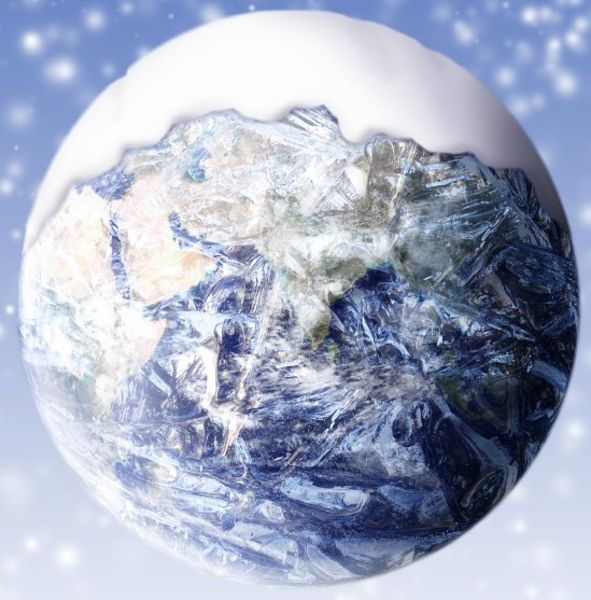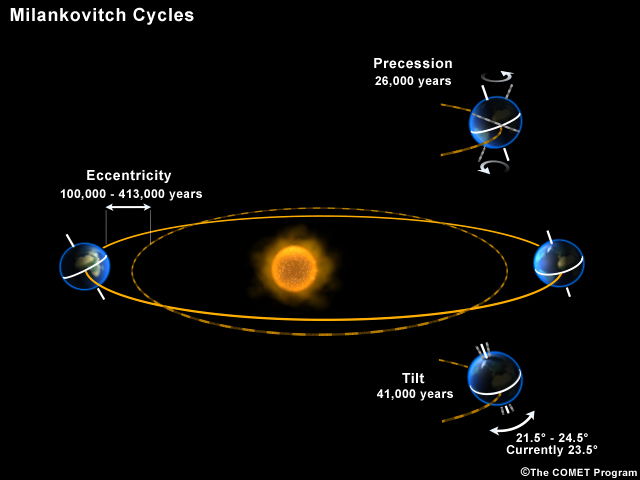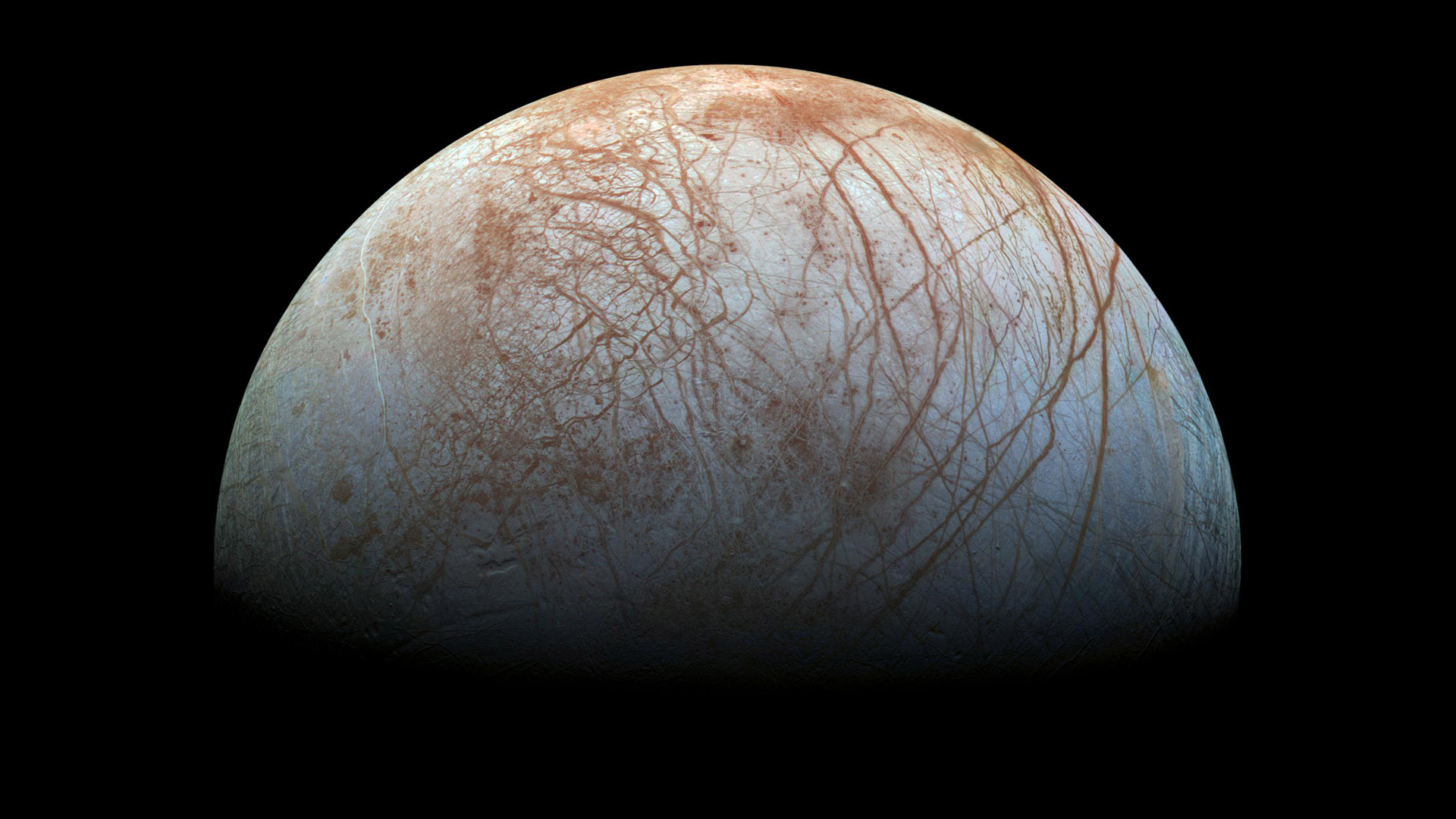Hunting for Alien Worlds (Part 4): 'Snowball Earth' & Earth-Like Planets

At the 2012 Astrobiology Science Conference, Astrobiology Magazine hosted a plenary session titled: "Expanding the Habitable Zone: The Hunt for Exoplanets Now and Into the Future."
Originally formulated as part of our "Great Debate" series, this panel of exoplanet hunters and thinkers held a lively discussion about some of the most important issues facing the search for and understanding of alien worlds orbiting far-distant stars.
Part One of this series examined the ways exoplanet science is changing today while Part Two explored the likelihood of finding habitable planets. Part Three navigated some of the issues facing scientists investigating habitability. Here is Part Four:
David Grinspoon: Do we have any audience questions or comments? I see we have a couple.
Audience: Thinking about the Earth through time, how well do we understand how the Earth gets into and gets out of a "snowball" phase? [See Images of the Three Most Earth-Like Alien Planets]
Vikki Meadows: I'd say that topic is still open to a lot of research, to put that mildly. But yes, that's a very key point, because we have appeared to have gone into snowball and come back out of it again. And in fact several of my team members work on that particular problem.
Sara Seager: That's one of the things I find scary about early Earth. One of the classes that I do at MIT is on global warming science, so the textbook example, the one thing that we actually know about Earth and the climate change is that Earth goes through the Milankovitch Cycles. Where the eccentricity changes, the spin axis changes and it also precesses. And if all those things line up in the wrong way, you actually can get in a place where your northern, actually North America is a solar plexus for warming. Whereby if the ice sheets, the ice and snow and winter, stays and lingers through the summer, it can be a feedback where it grows and grows and grows and grows. And that's the way that people haven't proven but think that Earth can enter a snowball. So, these little tiny changes in Earth's eccentricity and its tilt and precession — which way it’s tilted and which season — make enough of a difference to maybe put us in snowball. That's actually pretty phenomenal when you think about habitability.
Breaking space news, the latest updates on rocket launches, skywatching events and more!
Vikki Meadows: On the positive, less pessimistic side — Sara and I thought we would be pessimistic/optimistic on this panel — there are situations where the obliquity of the planet stops you from going into snowball. Or can in fact enhance habitability and allow the habitable zone to be pushed that much farther if the obliquity is in a good position. So you know, you roll your dice and maybe it’s a bad thing or maybe it’s a good thing.
David Grinspoon: So is the planet half-full of ice or half-empty of ice?
[Laughter]
Sara Seager: It’s a concept of uncertainty that we will tell you someday what the fraction of Earth-size planets are. Some other day we will tell you what the fraction of potentially habitable worlds are. And then someday we will find planets with bio-signature gases, and we will tell you for individual objects what the approximate probability is that they are indeed inhabited. [Planets Large and Small Populate our Galaxy (Infographic)]
Dirk Schulze-Makuch: Or the snowball Earth events were maybe just being caused by biology. Because the first one was caused from cyanobacteria producing oxygen and taking basically the carbon atoms out of the atmosphere. And the other big one, snowball Earth event about 600 million years ago, maybe that was caused by the rise of multi-cellularity. Because again the different way biology interacted with the atmosphere.
Sara Seager: Well let's just say one more thing. And that is, because we do have two astrophysicists on this panel, that the Milankovitch Cycles have to do with physics as it relates to other planets. And we actually know that, that is the one thing that we do know, we can work back as to what happened when in terms of Earth's seasonality.
David Grinspoon: We have another comment or question in the audience?
Audience: The only inhabited planet that we know about is a highly tectonic planet. And I realize it is difficult to identify tectonic worlds using telescopes and other forms of remote sensing. But tectonics have not been mentioned at all in this discussion and I would like to know do you feel it is important and, if so, is there any chance for any future markers or indicators for discovering tectonic worlds with the remote observation techniques that we have?
[extended silence]
Sara Seager: I guess there's probably a reason why we didn't discuss it. [Laughter] It's one of those topics that's controversial from pretty much every single angle. Some people say Super-Earths are not going to have tectonics, some people say they are more likely to have tectonics. Some people say tectonics are essential for biogeochemical cycles, recycling elements that get deposited by life on the ground that need to get conducted and brought back up. Other people say if your planet had enough resources and life's operating very slowly and won't exhaust all those resources, you don't need tectonics. And finally, we don't know of any way to observe them or not at this point. So that's the pessimistic answer.
David Grinspoon: And if I were going to abuse my moderator's prerogative, I might in that case point out that future missions to Venus are one of the best ways we can address and understand why it is that a planet of a certain size and apparently similar composition would in one case develop plate tectonics, and another case not. But we don't yet have the observational data, even in our own solar system, to address that question in ways that I think we will be able to address in the future. But you're right it's of course a very important aspect of this whole topic.
Vikki Meadows: Yeah, we can validate your assertion that in fact plate tectonics is considered to be extremely important for buffering climate over time. So that's considered a major factor in habitability. Possible signs of it might be the presence of an atmosphere with a certain balance of gases or volcanism. But yes, it is very difficult to try and figure it out.
Audience: I was just wondering on testing models of habitability, the obvious thing we need to understand in our solar system is Mars. I wonder if the panelists could address just how good our models are for understanding the history of habitability of that planet, its atmosphere, etc.?
Vikki Meadows: Interestingly we do look at the habitability of Mars as part of our models. But we don't tend to spend that much time on Mars because it is not habitable currently. So I can just say from the VPL standpoint, we are interested in trying to figure out what warmed early Mars, if there was running water on the surface. But we don't spend an awful lot of time on Mars doing those. But I don't know other groups; have you worked on Mars?
Dirk Schulze-Makuch: I think there's an important concept embedded in this, and this is history. What you do with current exoplanet observation, you see how the planet is today. And if you look and imagine that if you look at Mars today with a telescope, you see what doesn't look too life-rampant. Maybe there’s some kind of possibility that something is somewhere on the edge still, making somewhat a living, scraping by. But if you want to really have a biosphere on an active planet, we don't see that right now. And with our telescopes we cannot see the past, how the planet looked 2 billion years ago or 4 billion years ago. So we may actually miss quite a bit because we can't look into the past. And if we know the past of Mars for example, we can say, "Well there was some running water, there was more activity, and perhaps we have the origin of life there and at some point we have more blooming of life and then we see it in the niches". But that we wouldn't conclude when we just looked today on Mars. So that is a pretty difficult issue.
Audience [continued]: I was thinking more of just physical models for the planetary evolution. How much information we have about that to really kind of nail down at least that part. The part that astrophysicists can do, how much we really thought.
Eric Ford: We can go to Mars, we can pick up rocks, and we still can't figure out what happened there. We're never going to get anywhere near that good data for an exoplanet.
Sara Seager: I think it’s fair to say that no one on this panel can answer your question to the level you needed answered.
David Grinspoon: And speaking as a planetary atmosphere person, I can say nobody on Earth can really answer your question the way we want it answered. That’s why we continue to explore Mars. And there's a lot we've learned, but there's still a lot of mystery. And one big mystery about Mars: What happened to the water? And what happened to the conditions that allowed the running water? I think it’s fair to say we still don't have a really good answer for that. And obviously it is extremely important that we get one if we're going to be able to proceed in the topic of this discussion. Sir?
Audience: Sara mentioned that one day we will be able to give an estimate of the fraction of planets at stars which are Earth-like planets. I think we already have that number.
Sara Seager: Earth-size, I said fraction Earth-size.
Audience: Fraction of Earth-size planets. And I think that we already have that number. Howard, et al in 2011, we analyzed that data in a review on planetary habitability. Based on that, it looks like there are ten times as many Earth-size planets as there are Uranus- and Neptune-size planets. And ten times as many Uranus- and Neptune-size planets as Jupiter-size planets. Now it looks like about 100 percent of stars have planets around them, and so we already have an estimate of how many of those stars will have Earth-size planets. So I will be giving a talk on that on Thursday.
Sara Seager: Well, that's fascinating thanks. That was a really great comment. Let me just ask a question: how complete is that? To what semi-major axis? Because it is easier to find a small planet close to the star. We really want to know the full range possible.
Audience: We just reinterpreted it, Howard et al 2011. They looked at the probability of Earth-size planets of less than fifty-day orbits. So hopefully that answers your question.
David Grinspoon: And which session is that, that you will be speaking?
Audience: That's on Thursday. This is an annual review paper that comes out in this volume, I think it is already on-line. Charley Lineweaver and I published a paper on that.
David Grinspoon: Well, I hope that session on Thursday is in a large room, because we are all going to come now.
[Laughter]
Eric Ford: I think it is fair to say that all the planet-search techniques are just barely reaching to Earth-size planets. So the affects of selection effects and incompleteness are still quite substantial. And we want to spend several more years both with radial velocity and transit searches and perhaps even micro-lensing searches at longer periods to be able to really answer this question without having to extrapolate or deal with unknown selection effects.
Sara Seager: Right, but since we are bouncing off like pessimism versus optimism, I will agree with you that we don't really have a great quantitative example, quantitative statement without extrapolating. We are seeing there are more and more planets of smaller sizes. And that's exciting.
Audience: Is it possible that Earth is only marginally habitable? In other words, could the panel talk about what might make a planet more habitable than the Earth?
David Grinspoon: Wow, great question. So we tend to think of Earth as a pretty nice place. But it’s a good point. It’s also probably fallacious unless you’re a creationist, or one of the authors of "Rare Earth" to think of this as the best of all possible worlds. Are there variables that might of made Earth actually more habitable than it is? Or is that even a ridiculous question?
[Laughter]
Vikki Meadows: The only thing I can think of is that we are kind of in this glacial period right where we have polar ice caps. And that hasn't been true in the past. So maybe we would have had more surface area, more real estate if we didn't have our poles as we do right now. But that's a very interesting question.
Dirk Schulze-Makuch: You may have some more tropical areas, and maybe higher air density, that you'd have more creatures flying in the air and heavier ones. But we are pretty much close to the optimal.
David Grinspoon: I don't know if that is true. I would suggest that Earth maybe has a little too much iron and therefore it took a long, long time for oxygen to build up in Earth's atmosphere. I can imagine an Earth-like planet where oxygen would have built up earlier and more easily. But that doesn't necessarily make a planet more habitable. But if that had happened on Earth, by now we would be roaming the galaxy.
You can watch the full "Great Exoplanet Debate" here: https://connect.arc.nasa.gov/p68qflmgnhk/?launcher=false&fcsContent=true&pbMode=normal
This story was provided by Astrobiology Magazine, a web-based publication sponsored by the NASA astrobiology program.
Join our Space Forums to keep talking space on the latest missions, night sky and more! And if you have a news tip, correction or comment, let us know at: community@space.com.

Space.com is the premier source of space exploration, innovation and astronomy news, chronicling (and celebrating) humanity's ongoing expansion across the final frontier. Originally founded in 1999, Space.com is, and always has been, the passion of writers and editors who are space fans and also trained journalists. Our current news team consists of Editor-in-Chief Tariq Malik; Editor Hanneke Weitering, Senior Space Writer Mike Wall; Senior Writer Meghan Bartels; Senior Writer Chelsea Gohd, Senior Writer Tereza Pultarova and Staff Writer Alexander Cox, focusing on e-commerce. Senior Producer Steve Spaleta oversees our space videos, with Diana Whitcroft as our Social Media Editor.



